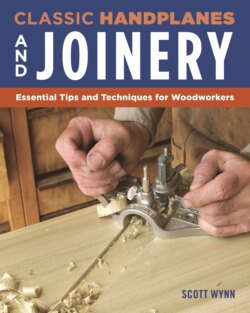Читать книгу Classic Handplanes and Joinery - Scott Wynn - Страница 8
На сайте Литреса книга снята с продажи.
ОглавлениеAs a woodworker it is really useful—perhaps mandatory—to know at least a little bit about blade steel. That bit of cutting edge is the direct extension of the image carried in your mind, shaping wood as you’re visualizing it, constantly evaluating, re-analyzing, and revising in a feedback loop. This bit of cutting edge can work with you or it can be indifferent—or worse. Knowing what steel the blades in your planes are made of will help you understand that blade’s abilities, limitations, and potential, how to best sharpen it, and, if you have the option, what might be the best steel for the kind of use to which you’re putting the plane.
While with a joinery plane there may be few options beyond using the blade the plane came with, you can still sometimes find a few alternatives. You may be able to use a blade from a different period of manufacture as the manufacturer may have changed their steel over time; or a different manufacturer may have used a different steel at the same time period and the blade may be interchangeable. You could also be ambitious and make your own blades. And, for instance, some manufacturers, such as Veritas, now offer a choice of O1, A2, or PM-V11 steel for many of their blades.
Wait, wait . . . what is this alpha-numeric soup? Read on.
